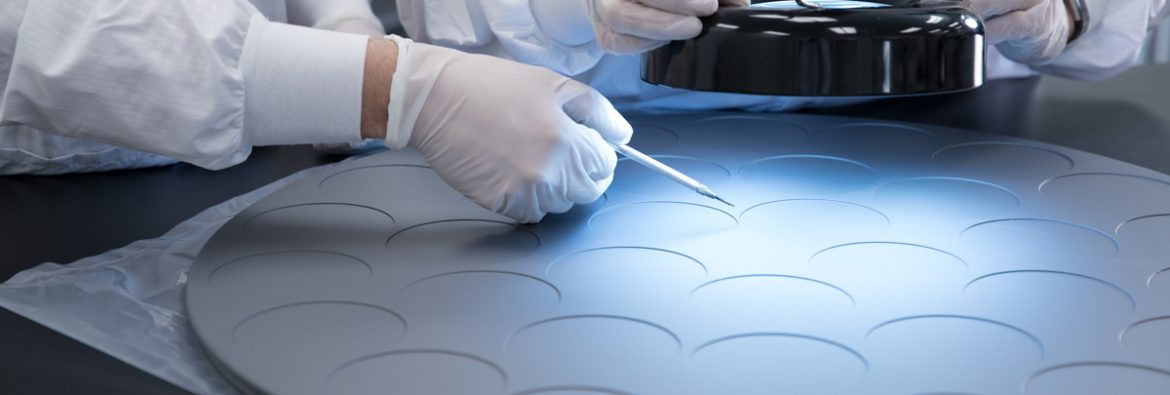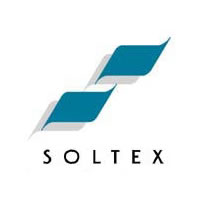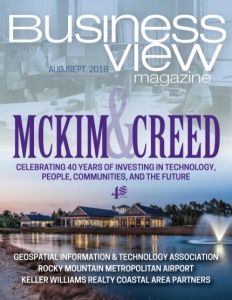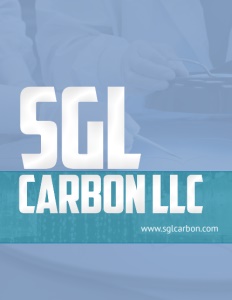SGL Carbon LLC
The value chain advantage
Business View Magazine interviews Ken Mannon and Andreas Wullner of SGL Carbon for our focus on the North American composites industry.
Incorporated in 1998, SGL Carbon LLC operates as a subsidiary of SGL Carbon SE, with headquarters in Wiesbaden, Germany. The technology-based company is a world leader in the development and production of carbon-based solutions. Its high-quality materials and products made from specialty graphite and composites are used in industrial sectors that determine the future: automotive, aerospace, solar and wind energy, semiconductor and LEDs, as well as in the production of lithium-ion batteries and other energy storage systems. In addition, SGL Carbon develops solutions for chemical and industrial applications.
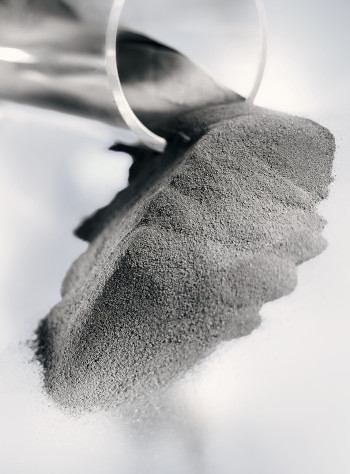 SGL Carbon has a global structure with 32 production facilities – 17 in Europe, 8 in North America, 7 in Asia – and a service network covering over 100 countries. Offering in-depth materials, production, applications and engineering expertise, a comprehensive graphite and carbon fiber-based product portfolio, and an integrated value chain from the raw material to entire components, SGL serves customers through a global sales network and state-of-the-art production sites in Europe, North America, and Asia.
SGL Carbon has a global structure with 32 production facilities – 17 in Europe, 8 in North America, 7 in Asia – and a service network covering over 100 countries. Offering in-depth materials, production, applications and engineering expertise, a comprehensive graphite and carbon fiber-based product portfolio, and an integrated value chain from the raw material to entire components, SGL serves customers through a global sales network and state-of-the-art production sites in Europe, North America, and Asia.
Ken Mannon, President of SGL Carbon LLC in North America, has been with the company since it was created over 30 years ago, and knows well the backstory. “SGL Carbon was formed in 1992 when Great Lakes Carbon and SIGRI GmbH in North America merged their graphite operations into a new company called SIGRI Great Lakes Carbon. A year later, they acquired Pechiney Grafite of France and that formed the basis of what is now SGL Carbon and, specifically, SGL Carbon LLC here in North America.”
Various acquisitions and divestitures occurred over the years. In 1995, a machining specialty shop belonging to another graphite competitor in St. Mary’s, Pennsylvania was acquired; and in 1996/97, SGL acquired a subsidiary in California – Hitco Carbon Composites. Both are still part of the portfolio. “Today, we’ve got eight operating sites in the U.S. and the Charlotte office – so nine sites in total,” says Mannon.
“The company was formed as a result of the economic conditions of the graphite electrodes marketplace,” he continues. “The core product at the time was graphite electrodes, which were sold into electric arc, steel mini-mills. And that was the driving force of the business for many years. However, in 2017 we divested our former core business unit, Performance Products, including the graphite electrodes business. We wanted to exit the this cyclical commodity market and focus on more high-growth and innovative industries. Our remaining two business units Graphite Materials & Systems (GMS) and Composites – Fibers & Materials (CFM) drive the developments in the megatrends of mobility, energy, and digitization.”
Andreas Wuellner, Head of the business unit, Composites – Fibers and Materials, continues the story: “When we acquired Hitco, we tried to strengthen our composites activities in the U.S., supplying the aerospace industry from the Gardena, California facility. That was the first step into composites in the U.S. The second step was in 2010, when we set up a joint venture with BMW to supply each of their new vehicles that were going to be manufactured in Germany, and we had to set up a global supply chain for this. We selected Moses Lake, Washington for the carbon fiber manufacturing site because of the availability of renewable energy and a great workforce.” At the end of 2017, the company announced its decision to acquire BMW Group’s minority interest in the joint venture, with SGL Automotive Carbon Fibers (SGL ACF) to become the sole owner.
SGL has about 700 employees in North America, about 17 percent of the company’s global workforce, with 140 at Moses Lake. That carbon fiber plant, set up from scratch, is now one of the largest, most eco-friendly facilities in the world. It supplied the first carbon fiber to the BMW project just one year after opening in 2010 – record speed for its time.
Wuellner clarifies, “The CFM value chain starts with raw materials for carbon fibers, which is called the precursor. We manufacture the precursor ourselves in Japan and Portugal. From there, we convert it into carbon fiber in the U.K. and Moses Lake in the United States. The carbon fiber is then converted into materials, and we also make components from those materials. So, we cover the entire value chain in CFM. This is very important because the composites industry is not yet that well developed. It’s a competitive advantage if you have the ability to fine-tune the fibers and the materials which become materials for components, that then go into aerospace, or automotive, or energy, or industrial applications.”
GMS is quite similar. That business unit does manufacture parts and solutions, but also produces the raw graphite materials. The main customers are the LED and semi-conductor industries, as well as the lithium-ion-battery industry. The automotive industry is, by far, the biggest customer for Composites – Fibers and Materials, which includes supplying carbon brakes materials for the auto-racing market. SGL put itself at the forefront of technology, supporting the Technical University of Munich team, with development of the Hyperloop. For over eight years, the company has also supported the Carbon Composites endowment chair (LCC) at the University, which maintains a holistic approach towards development of fiber-reinforced composites and their applications.
Competition in the automotive industry is intense, but SGL is well positioned, thanks to partnerships with BMW and several other automakers, and long-time partnerships with OEMs in the automotive and wind energy sectors. Roller blades for wind turbines are made from carbon fiber reinforced plastics, and SGL supplies that market, as well.
According to Wuellner, the biggest challenge is the industrialization of composite components. “Because we’re always competing with other materials, and carbon fibers aren’t cheap,” he opines. “You have to reduce scrap and waste, as much as possible, and you have to use carbon fibers where it is really beneficial – and only there. So, it is important to understand the material very well and develop the appropriate manufacturing technology. That’s what we’re doing, because it’s really about bang for the buck. Otherwise you won’t be competitive with carbon fiber reinforced plastics. That’s something we’ve learned over the years.”
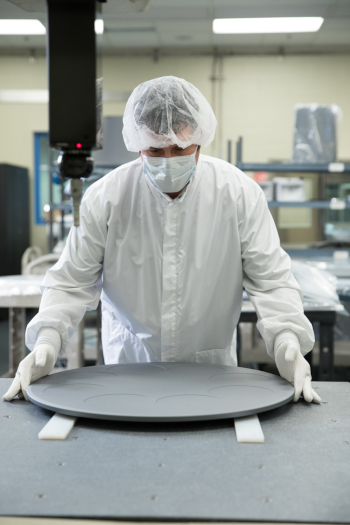
Mannon adds, “Many of our Graphite Materials and Systems customers have been with us for a long time, but we also go out seeking new business at trade shows and industry conventions, whereas CFM has to develop its market, educate customers, and deliver solutions.” “It’s not good enough to throw the material or fiber over the fence,” says Wuellner. “We have to come up with a solution; be good at convincing the customer that a composite solution is advantageous. That involves a lot of technical service.”
Environmental sustainability is a key factor in the composites industry. The Moses Lake facility uses renewable electric power stemming from the Columbia River to feed the ovens in its carbon fiber plant. The plant itself was built to LEED Gold standards. Wullner notes, “Environmental regulations are different in each state of the U.S. and in every nation that we work in, globally. We have national EPA regulations to comply with and also state-particular thresholds that have to be met. Washington, being a ‘green’ state, focuses on environmental protection and we are proud to be a good corporate citizen there.”
Weighing the merits of being environmentally friendly against the extra costs incurred is a true balancing act. As a customer, BMW puts a lot of emphasis on working with suppliers that are willing to support good environmental practices. SGL has developed products that offer many other benefits, so they can cover the cost disadvantage with a better price premium because the product itself is state-of-the-art.
SGL Carbon is banking on the composites industry being a much more mature, consolidated industry in the future, where using composites as a substitute for high-strength steel or aluminum materials will be more common, and supply chains will be operating on a more global scale than they are today. Composites will become a “normal” choice of material, and there will be greater standardization of materials, as well. SGL wants to be a significant player in such a global industry; to increase its current share in the automotive, aerospace, industrial applications, and energy markets. The company anticipates exceptional room for growth in all those areas.
From Mannon’s perspective, “SGL Carbon is a company that changes as time goes on; we are not stagnant. As you can see by our recent rebranding, we are aware of what’s going on in the marketplaces, and act accordingly. We have sustainable solutions in mind.”
Wuellner sees the company as a world leader in composites fibers and materials. “We are delivering composite material solutions to our customers and serving the automotive, aerospace, wind, and industrial application markets. It’s very exciting to be part of the transition of the industry, which is evolving from operating in niche markets to a real global industry with established supply chains. That’s amazing to be involved with and to have some input and effect on those changes.”
Check out this handpicked feature on Revchem Composites – Composite solutions delivered daily.
AT A GLANCE
WHO: SGL Carbon LLC
WHAT: Global leader in carbon-based solutions
WHERE: NA Headquarters in Charlotte, North Carolina
WEBSITE: www.sglcarbon.com
